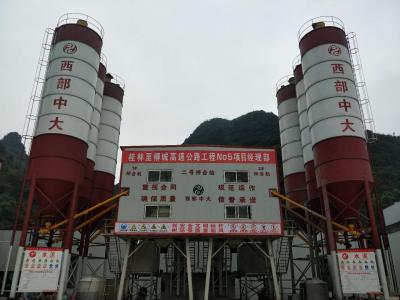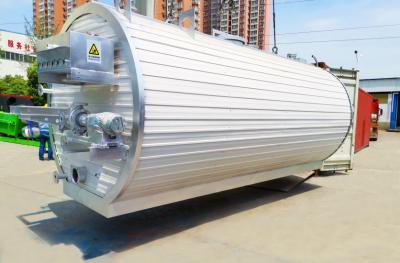How to bulid a concrete mixing plant
The need to build a mixing plant
I. General layout.
For flat terrain and large concrete consumption contract sections, the concrete mixing plant is built on a large scale and the site is open. For mountainous areas with restricted land use, the concrete mixing plant should be constructed according to local conditions and a reasonable layout.
The layout of the stabilised soil mixing plant is reasonable, and the functional partitions are clear and distinct.
II. Aggregate bin
According to the needs of the project, the mixing plant is equipped with several aggregate bins with the required capacity, and the materials of different specifications are stacked in different areas, and the information on the partition walls such as the name, specification, quantity and quality status of various materials are clearly marked.
Aggregate bins are installed as required and have material to be checked at the bottom of the bins. The silo under construction is protected from rain. The thickness and height of the concrete partition walls are up to standard.
III. Feed hopper
The hopper of the mixing machine is equipped with an enclosed rain shelter (some hopper rain shelters are connected to the aggregate silo rain shelters) to prevent the aggregate from being wetted by rain on the hopper and to ensure a stable aggregate water content; and conspicuous aggregate specifications and aggregate silo numbers are set on the hopper and rain shelters to facilitate corresponding loading and to prevent wrong loading from affecting the concrete quality. The width of the feed hopper is narrowed to match the width of the feed hopper of the mixer to prevent cascading problems when the hopper is loaded by the forklift.
The feed hopper is connected to the silo canopy. Enclosed hopper canopy. The hopper is clearly marked. Narrow the width of the forklift hopper to match the width of the mixer hopper.
Cement cooling measures
In order to solve the current problem of high cement mixing temperatures affecting the quality of concrete, some projects have adopted the following practices.
(1) Concrete mixing stations are equipped with water cooling circulation systems to reduce the temperature of concrete leaving the silo. (2) A water drenching system was installed outside the cement storage tank to lower the temperature of the cement inside the tank by drenching the outside wall of the tank with water at regular intervals. (3) Each mixing machine is equipped with 6 cement storage tanks, which are recycled to reduce the temperature of the cement by extending the storage time of the cement.
V. Environmental protection measures for the mixing plant
In order to protect the environment in concrete mixing plants, each project has adopted environmental protection measures such as adopting a full-coverage aggregate conveyor belt, installing a dust collector on top of the cement tank, setting up an inlet and outlet wheel washing tank and a sewage discharge sedimentation tank to prevent construction dust and sewage discharge from polluting the surrounding environment and to meet environmental protection requirements.
The conveyor belt is fully covered to prevent dust from being generated by the material transfer. Automatic dust collectors are installed on top of the cement tanks to prevent dust from leaking from the cement. A wheel washing tank is installed at the entrance of the mixing station to ensure that the site is clean and dust-free. A three-stage sewage sedimentation tank is set up to discharge wastewater from the mixing plant after sedimentation.
According to the scale and characteristics of each project, the overall layout, site hardening, drainage system, rainproofing and separation of silos, material piling, mixing equipment and environmental protection measures of the concrete mixing plants are all in line with the requirements of "double standard management", and each has its own characteristics, so as to achieve the purpose of specialisation and standardisation of concrete production. The aim is to professionalise and standardise the production of concrete.



